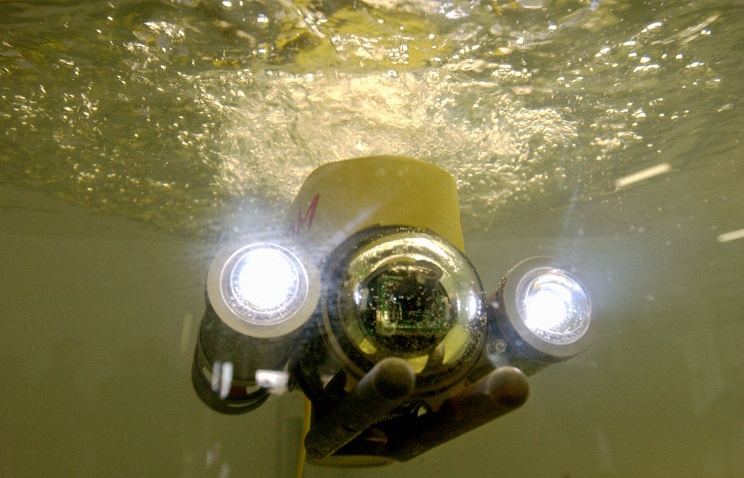Kursk engineers have begun to test the underwater robot of its own design

Scientists from the South-West State University (Kursk) began to experience an unmanned underwater robot . This was told by the project manager, head of the UZSU robotic laboratory, Candidate of Technical Sciences Andrei Yatsun. Tests are scheduled for completion by the fall.
The cost of the prototype was about a million rubles. According to the head, this is 5-6 times lower than foreign analogues. At the same time, in robot production, naturally, it will cost even less - according to the development team's estimates, the serial cost of the robot will be about 100 thousand rubles.
')
The development of the device, engineers began in 2014, and in February 2015 started to build a prototype. According to Yatsun, the device should move autonomously in any water bodies and carry out various measurements. This is the second version of the underwater robot, assembled by a team of specialists.
The length of the robot is 1.5 m, it weighs 40 kg. Under water, it moves quite quickly, at a speed of 4 m / s, and can dive to a depth of 30 m. For 4 hours, the robot autonomously can measure and record the state of the environment using a camera, sensors of environmental monitoring, magnetic field and other equipment. He can also carry and deliver to the right place a small load.
Such a robot in some cases will be able to replace the divers of the Ministry of Emergency Situations and the Ministry of Defense, conduct underwater research during the construction and diagnostics of dams, monitor the reservoirs-coolers of nuclear power plants, and perform other underwater work. Due to the modular design, the robot is a designer, on which it will be possible to hang the necessary additional equipment at the request of the customer.
According to the developers, this price niche of autonomous underwater robots is now empty. There are laboratories in which more and more expensive robots are produced - in particular, in Moscow, Vladivostok and St. Petersburg.
It is possible that this robot will be useful for the study of the oceans. If you equip it with a recharging system from solar panels, it will be able to help oceanologists in uncovering the secrets of the relatively little-studied water spaces of the oceans of our planet.
The research laboratory of robotics at the South-Western State University, which includes the FABLAB rapid prototyping center, was opened with a grant of 20 million rubles from the Russian Science Foundation. In addition to underwater robots in the laboratory, they design exoskeletons for domestic, medical, industrial and military use, wheeled reconnaissance robots and domestic analogs of electric drives for robotics.
Source: https://habr.com/ru/post/365735/
All Articles